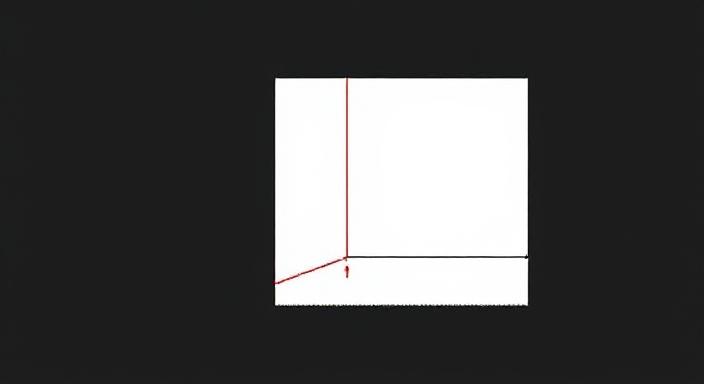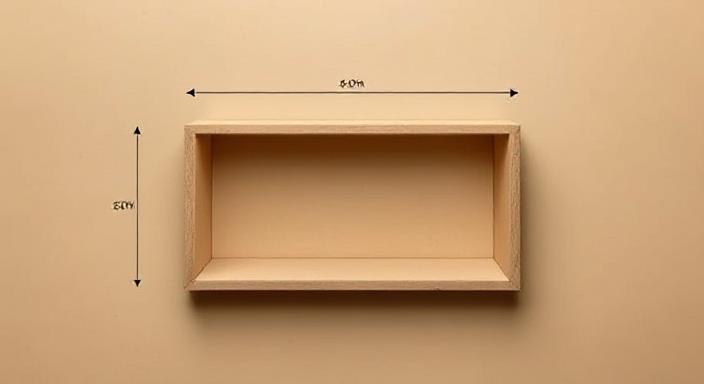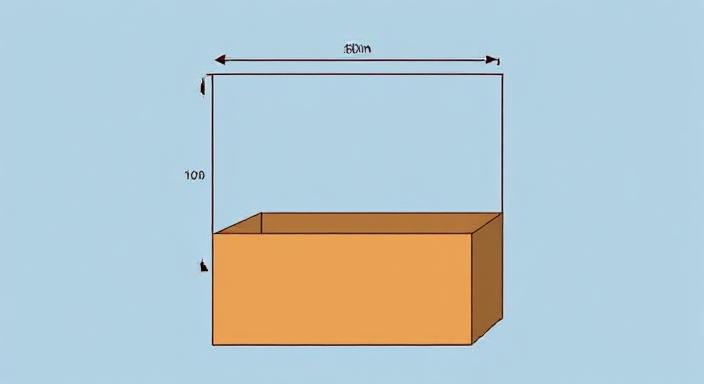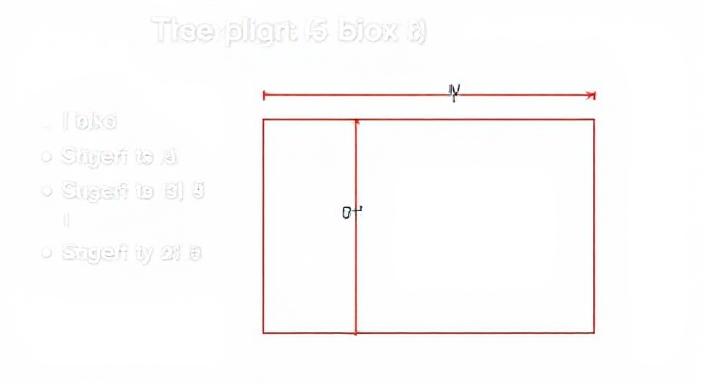From e-commerce businesses to gift packaging, knowing how to figure out dimensions of a box is crucial. Shipping companies, packaging manufacturers, and even DIY projects rely on precise length, width, and height measurements. Inaccurate measurements can lead to extra shipping costs, poorly fitting products, or wasted packaging material.
This article will walk you through how to measure box dimensions, how to write them correctly, and everything you need to know about box size calculation.

1. Understanding Box Dimensions
When it comes to boxes, three measurements matter most:
- Length (L): The longest side of the box.
- Width (W): The shorter side of the base (front-facing panel).
- Height/Depth (H or D): The vertical measurement from base to top.
👉 The industry standard is to list them in this order: Length × Width × Height (L × W × H).
For example, a box with dimensions 12″ × 8″ × 6″ means:
- 12 inches long
- 8 inches wide
- 6 inches high
2. How to Measure a Box
To measure the dimensions of a box accurately:
- Find the Length – Measure the longest side of the opening at the base.
- Find the Width – Measure the shorter side of the opening at the base.
- Find the Height (Depth) – Measure from the bottom to the top of the box.
This applies to both outer box dimensions and rigid box dimensions.

3. How to Measure the Inside of a Box
When fitting products inside, internal dimensions matter more than external ones. To measure the inside of a box:
- Place the measuring tape inside the box.
- Measure length and width across the bottom.
- Measure depth from the inside base to the top edge.
These interior dimensions ensure the box can hold your products snugly.
4. How to Write Box Dimensions
Many people get confused about how to write box dimensions properly. The correct order is always:
Length × Width × Height
For example:
- A box listed as 15 × 10 × 5 inches means 15 inches long, 10 inches wide, and 5 inches tall.
- Never confuse height vs depth they represent the same vertical measurement.

5. How to Read Package Dimensions
Shipping companies often ask for package dimensions. When reading them:
- The first number is always length.
- The second number is width.
- The third number is height (or depth).
Example: A shipping box with 20 × 12 × 8 in. will be read as 20″ long, 12″ wide, and 8″ tall.
6. Calculating Box Size (Volume)
To calculate box size, you need to find the volume using the formula:
Volume = Length × Width × Height
For instance, a box measuring 10 × 8 × 6 in. has a volume of 480 cubic inches.
This calculation is important for:
- Shipping costs (since couriers charge based on dimensional weight).
- Storage planning (knowing how many boxes fit in a space).
7. How to Properly Give Box Dimensions
When providing custom box dimensions to a packaging supplier:
- Always list Length × Width × Height.
- Specify whether measurements are inside (internal) or outside (external).
- Mention units clearly (inches, centimeters, or millimeters).
Example: Internal dimensions: 12 × 8 × 4 in.

8. Common Mistakes When Measuring Boxes
- Mixing up height and width – Always take the vertical measurement as height.
- Not clarifying inside vs outside dimensions – This can cause product fitting issues.
- Ignoring box thickness – The cardboard thickness can slightly reduce the interior space.
Conclusion
Learning how to measure box dimensions accurately helps avoid shipping errors, reduces costs, and ensures products fit perfectly inside packaging. Whether you’re figuring out rigid box dimensions, ordering custom box dimensions, or just learning how to read package dimensions, always remember the golden rule:
👉 Box dimensions are written as Length × Width × Height.
With this knowledge, you can confidently measure, calculate, and write box dimensions for any packaging project.
Frequently Asked Questions (FAQs) About Box Dimensions
1. How do you measure the dimensions of a box?
To measure a box, use a measuring tape and record three values:
- Length (L): The longest side of the base.
- Width (W): The shorter side of the base.
- Height/Depth (H or D): The vertical distance from bottom to top.
Always list them in the order Length × Width × Height.
2. What is the correct way to write box dimensions?
The standard way to write box dimensions is:
👉 Length × Width × Height (L × W × H).
For example, a box listed as 12 × 8 × 6 in. means it is 12 inches long, 8 inches wide, and 6 inches high.
3. How do you figure out the width of a box?
The width is the shorter side of the box’s base (measured across the front). If you’re unsure, compare the two base sides the longer one is length, and the shorter one is width.
4. What is length, width, and height on a box?
- Length: The longest side of the base.
- Width: The shorter side of the base.
- Height (Depth): The measurement from bottom to top.
